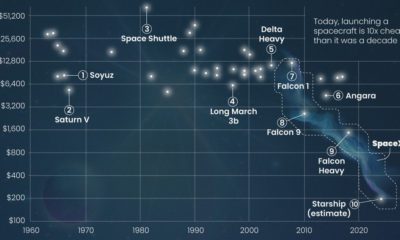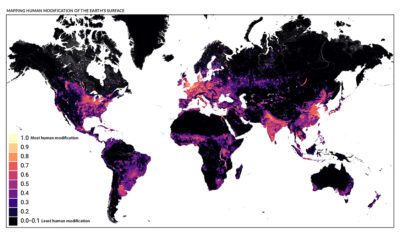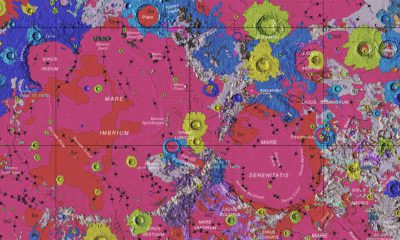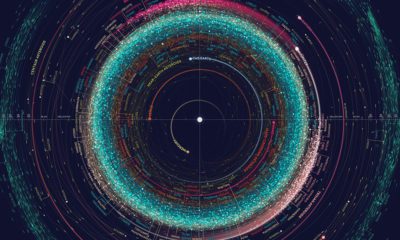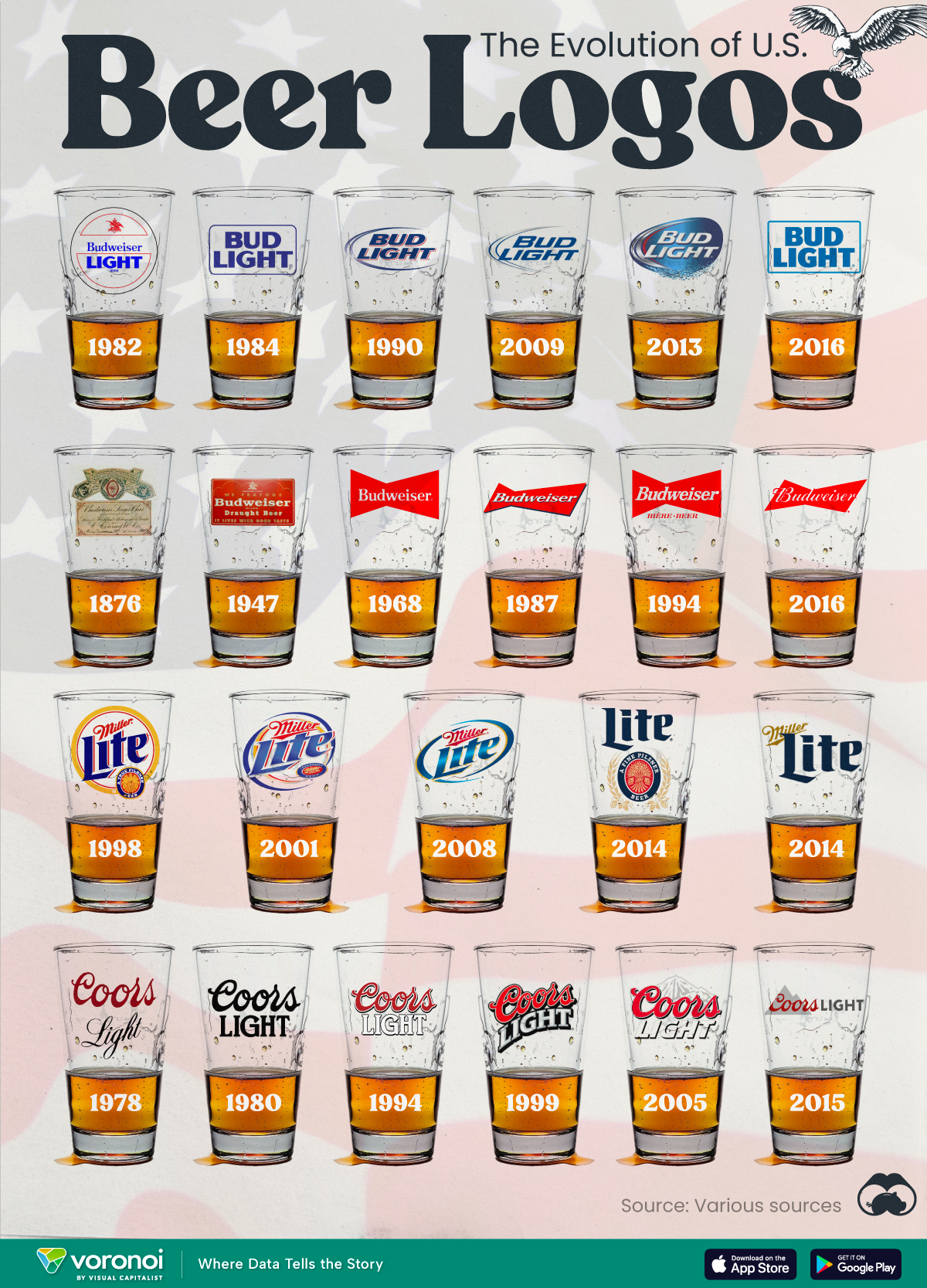Misc
A Visual Introduction to the Dwarf Planets in our Solar System
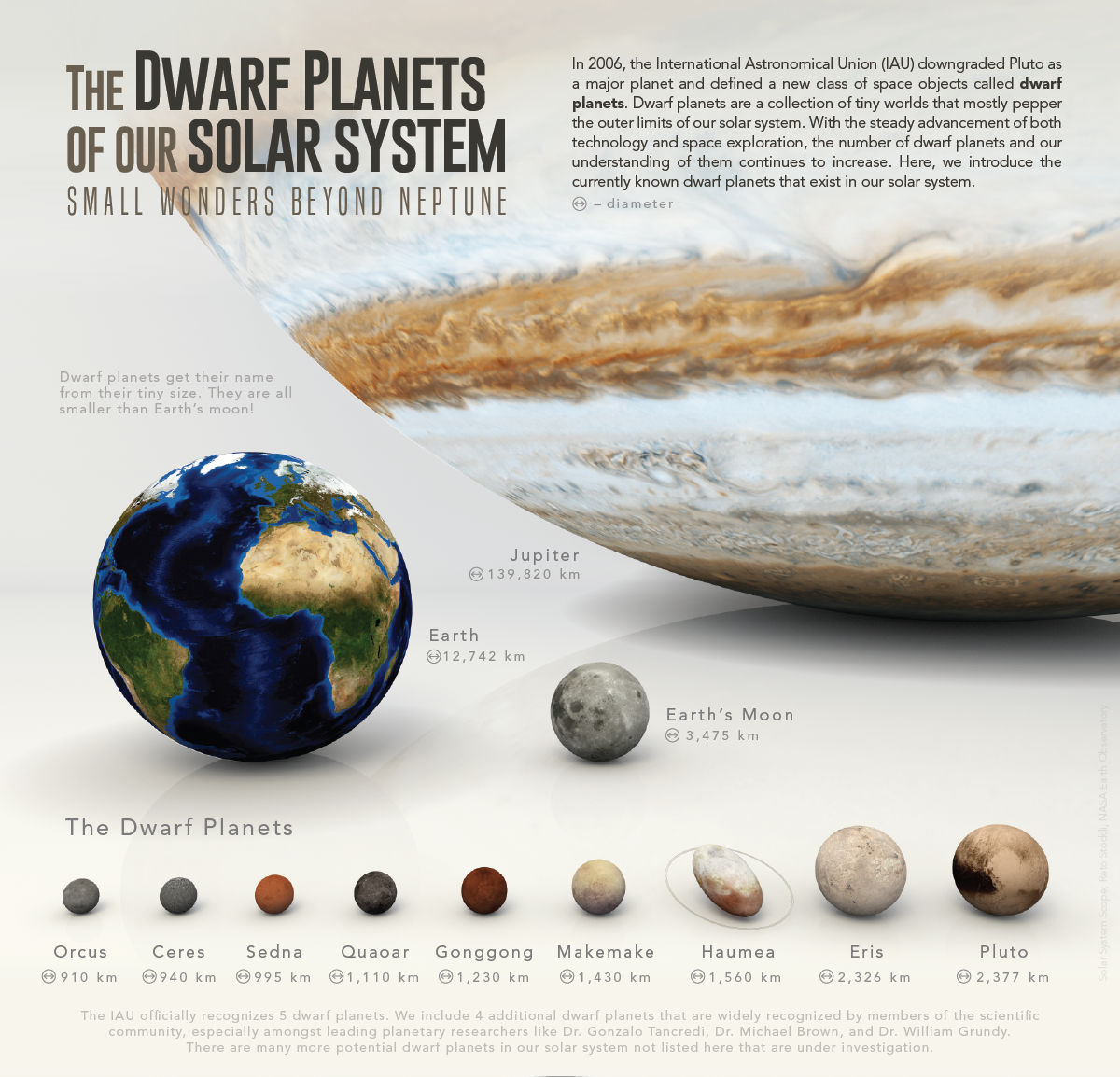
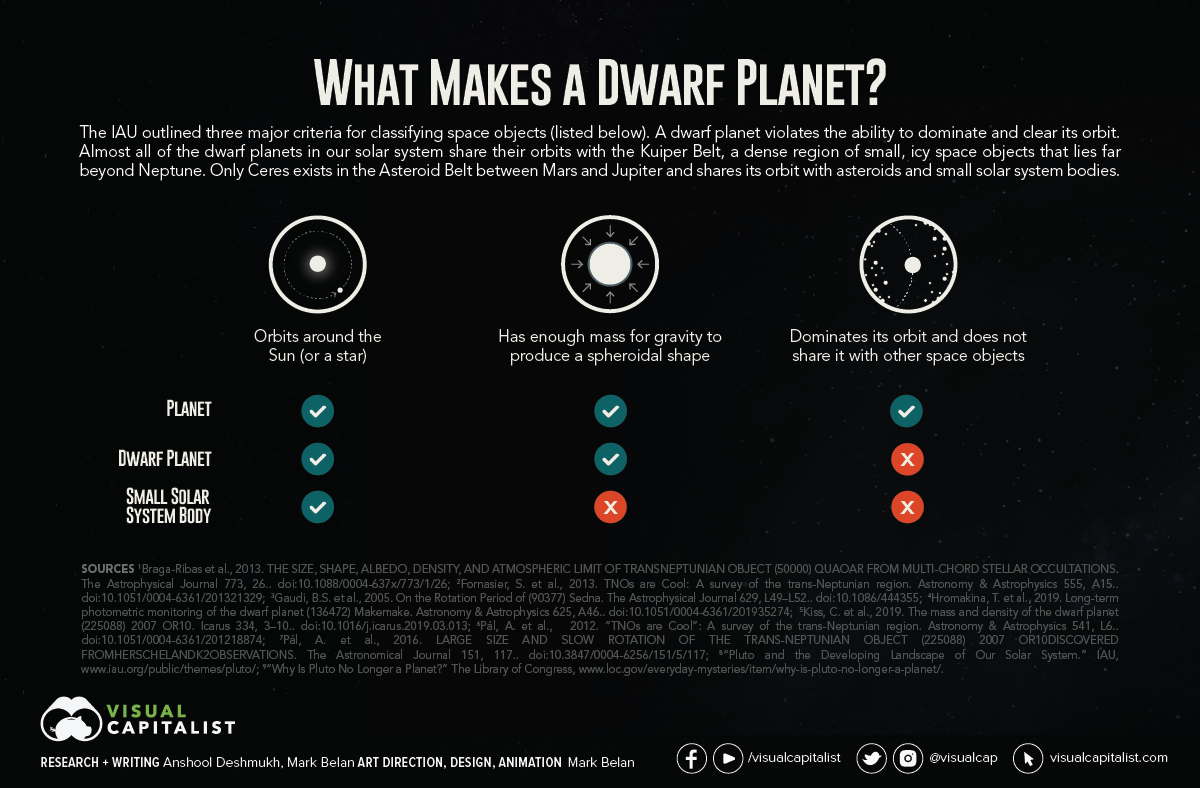
Pluto and the Introduction of Dwarf Planets
Since its discovery in 1930, Pluto has been a bit of a puzzle.
For starters, not only is Pluto smaller than any other planet in the solar system, but it’s also smaller than Earth’s moon. It also has an extremely low gravitational pull at only 0.07 times the mass of the objects in its orbit, which is just a fraction of the Moon’s own strength.
At the same time, Pluto’s surface resembles that of terrestrial planets such as Mars, Venus or the Earth, yet its nearest neighbors are the gaseous Jovian planets such as Uranus or Neptune. In fact, Pluto’s orbit is so erratic that it led many scientists to initially believe that it originated elsewhere in space and the Sun’s gravity pulled it in.
These qualities have challenged the scientific view of Pluto’s status as a planet for years. It wasn’t until the discovery of Eris in 2005, one of many increasingly identified trans-Neptunian objects (objects beyond the planet Neptune), that the International Astronomical Union (IAU) defined criteria for classifying planets.
With Eris and other trans-Neptunian objects sharing similar characteristics with Pluto, the definition for dwarf planets was created, and Pluto got downgraded in 2006.
So what are dwarf planets, how do they differ from “true” planets and what are their characteristics?
The History of Dwarf Planets
A dwarf planet is a celestial body that almost meets the definition of a “true” planet. According to the IAU, which sets definitions for planetary science, a planet must:
- Orbit the Sun.
- Have enough mass to achieve hydrostatic equilibrium and assume a nearly round shape.
- Dominate its orbit and not share it with other objects.
Dwarf planets, along with not being moons or satellites, fail to clear the neighborhoods around their orbits. This is the primary reason why Pluto lost its status: because it shares part of its orbit with the Kuiper belt, a dense region of icy space bodies.
Based on this definition, the IAU has recognized five dwarf planets: Pluto, Eris, Makemake, Haumea, and Ceres. There are four more planetary objects*, namely Orcus, Sedna, Gonggong and Quaoar, that the majority of the scientific community recognize as dwarf planets.
Six more could be recognized in the coming years, and as many as 200 or more are hypothesized to exist in the Outer Solar System in the aforementioned Kuiper belt.
Ceres is the earliest known and smallest of the current category of dwarf planets. Previously classified as an asteroid in 1801, it was confirmed to be a dwarf planet in 2006. Ceres lies between Mars and Jupiter in the asteroid belt, and it is the only dwarf planet that orbits closest to Earth.
Here is a brief introduction to the most recognized dwarf planets:
| Name | Region of the Solar System | Orbital period (in years) | Mean orbital speed (km/s) | Diameter (km) | Diameter relative to the Moon | Moons |
|---|---|---|---|---|---|---|
| Orcus | Kuiper belt (plutino) | 247 | 4.75 | 910 | 26% | 1 |
| Ceres | Asteroid belt | 4.6 | 17.9 | 940 | 27% | 0 |
| Pluto | Kuiper belt (plutino) | 248 | 4.74 | 2377 | 68% | 5 |
| Haumea | Kuiper belt (12:7) | 285 | 4.53 | 1560 | ≈ 45% | 2 |
| Quaoar | Kuiper belt (cubewano) | 289 | 4.51 | 1110 | 32% | 1 |
| Makemake | Kuiper belt (cubewano) | 306 | 4.41 | 1430 | 41% | 1 |
| Gonggong | Scattered disc (10:3) | 554 | 3.63 | 1230 | 35% | 1 |
| Eris | Scattered disc | 558 | 3.62 | 2326 | 67% | 1 |
| Sedna | Detached | ~11,400 | ~1.3 | 995 | 29% | N/A |
Interesting Facts about Dwarf Planets
Here are a few interesting facts about the dwarf planets discovered in our solar system:
Ceres loses 6kg of its mass in steam every second
The Herschel Space Telescope observed plumes of water vapor shooting up from Ceres’ surface; this was the first definitive observation of water vapor in the asteroid belt. This happens when portions of Ceres’ icy surface warm up and turn into steam.
A day on Haumea lasts 3.9 hours
Haumea has a unique appearance due to its rotation, which is so rapid that it compresses the planet into an egg-like shape. Its rotational speed and collisional origin also make Haumea one of the densest dwarf planets discovered to date.
Makemake was named three years after its discovery in 2005
Makemake’s discovery close to Easter influenced both its name and nickname. Before being named after the creator of humanity and god of fertility in the mythos of the Rapa Nui (the native people of Easter Island), Makemake was nicknamed “Easter bunny” by its discoverer Mike Brown.
Eris was once considered for the position of the 10th planet
Eris is the most massive dwarf planet in the solar system, exceeding Pluto’s mass by 28%. As such, it was a serious contender to become the tenth planet but failed to meet the criteria set out by the IAU.
Pluto is one-third ice
The planet’s composition makes up two-thirds rock and one-third ice, mostly a mixture of methane and carbon dioxide. One day on Pluto is 153.6 hours, approximately 6.4 Earth days, making it one of the slowest rotating dwarf planets.
Exploratory Missions and New Planets on the Horizon
With newer technology rapidly available to the scientific community and new exploratory missions getting more data and information about trans-Neptunian objects, our understanding of dwarf planets will increase.
Nestled in the asteroid belt between Mars and Jupiter, the asteroid Hygiea remains a controversy. Hygiea is the fourth largest object in the asteroid belt behind Ceres, Vesta, and Pallas and ticks all the boxes necessary to be classified as a dwarf planet.
So what’s holding back Hygiea’s confirmation as a dwarf planet? The criterion for being massive enough to form a spherical shape is in contention; it remains unclear if its roundness results from collision/impact disruption or its mass/gravity.
Along with Hygiea, other exciting dwarf planets could be soon discovered. Here is a quick rundown of some serious contenders:
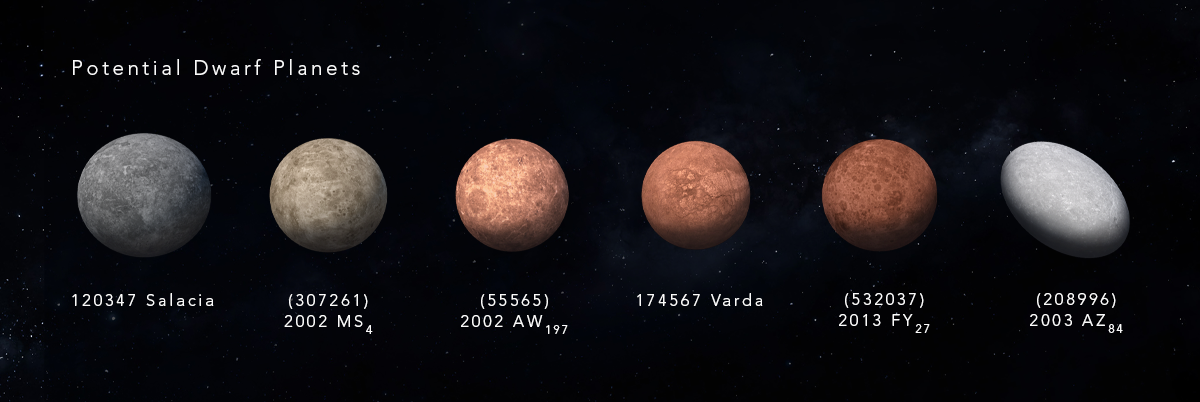
120347 Salacia
Discovered in 2004, it is a trans-Neptunian object in the Kuiper belt, approximately 850 kilometers in diameter. As of 2018, it is located about 44.8 astronomical units from the Sun. Salacia’s status is in contention because its planetary density is arguable. It is uncertain if it can exist in hydrostatic equilibrium.
(307261) 2002 MS4
With an estimated diameter of 934±47 kilometers, 2002 MS4 is comparable in size to Ceres. Researchers need more data to determine whether 2002 MS4 is a dwarf planet or not.
(55565) 2002 AW197
Discovered at the Palomar Observatory in 2002, it has a rotation period of 8.8 hours, a moderately red color (similar to Quaoar) and no apparent planetary geology. Its low albedo has made it difficult to determine whether or not it is a dwarf planet.
174567 Varda
Varda takes its name after the queen of the Valar, creator of the stars, one of the most powerful servants of almighty Eru Iluvatar in J. R. R. Tolkien’s fictional mythology. Varda’s status as a dwarf planet is uncertain because its size and albedo suggest it might not be a fully solid body.
(532037) 2013 FY27
This space object has a surface diameter of about 740 kilometers. It orbits the Sun once every 449 years. Researchers need more data on the planet’s mass and density to determine if it is a dwarf planet or not.
(208996) 2003 AZ84
It is approximately 940 kilometers across its longest axis, as it has an elongated shape. This shape is presumably due to its rapid rotation rate of 6.71 hours, similar to that of other dwarf planets like Haumea. Like Varda, it remains unknown if this object has compressed into a fully solid body and thus remains contentious amongst astronomers regarding its planetary status.
*Note: The IAU officially recognizes five dwarf planets. We include four additional dwarf planets widely acknowledged by members of the scientific community, especially amongst leading planetary researchers like Gonzalo Tancredi, Michael Brown, and William Grundy. There are many more potential dwarf planets not listed here that remain under investigation.
Misc
The Evolution of U.S. Beer Logos
In this graphic, we analyze the evolution of popular U.S. beer logos like Budweiser, Coors Light, Bud Light, and more.

The Evolution of U.S. Beer Logos
This was originally posted on our Voronoi app. Download the app for free on iOS or Android and discover incredible data-driven charts from a variety of trusted sources.
Despite selling a popular product, beer companies have to be creative to stand out in a competitive market.
In this graphic, we analyze the evolution of some U.S. beer logos based on various sources. We chose brands based on a mixture of criteria, including popularity (based on YouGov surveys), availability of logo assets, and those with interesting developments.
Bud Light Back to the ’80s
Despite recent backlash and calls for a boycott after sending a commemorative can to transgender influencer Dylan Mulvaney, Bud Light remains one of America’s best-selling beers.
The brand of light beer, owned by the Anheuser-Busch company, has switched from its more circular logo with italic letters adopted in the 1990s back to the Bud Light badge of the 1980s. It is composed of heavy uppercase lettering, written in two levels in a shade of blue with the inscription placed on a solid white background and enclosed in a thin rectangular frame.
Miller Lite Goes Old School
After following a similar approach to Bud Light’s branding throughout the 2000s, Miller Lite decided to undergo a major rebranding in 2014.
The company returned to its 1970s roots, once again combining a white can with its original blue, gold, and red logo. The redesign was largely considered a success, given that Miller Lite sales immediately increased following the change.
A Symbol of American Brewing
The oldest brand on our U.S. beer list, the Budweiser logo, has undergone more than 15 changes over the years.
The design of two connected triangles represents a red bow tie, as a symbol of American brewing.
The colors of the Budweiser logo include a vibrant red, which helps the logo stand out and be easily recognizable from a distance. Studies also suggest that the color red stimulates appetite. Meanwhile, the white inscription symbolizes purity and cleanliness.
Curious to learn more about the beer market? Check out this graphic about global beer consumption.
-
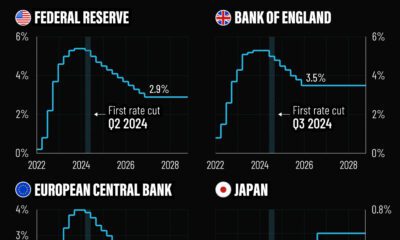
 Markets6 days ago
Markets6 days agoVisualized: Interest Rate Forecasts for Advanced Economies
-

 Markets2 weeks ago
Markets2 weeks agoEconomic Growth Forecasts for G7 and BRICS Countries in 2024
-

 Wealth2 weeks ago
Wealth2 weeks agoCharted: Which City Has the Most Billionaires in 2024?
-

 Technology2 weeks ago
Technology2 weeks agoAll of the Grants Given by the U.S. CHIPS Act
-

 Green2 weeks ago
Green2 weeks agoThe Carbon Footprint of Major Travel Methods
-

 United States1 week ago
United States1 week agoVisualizing the Most Common Pets in the U.S.
-
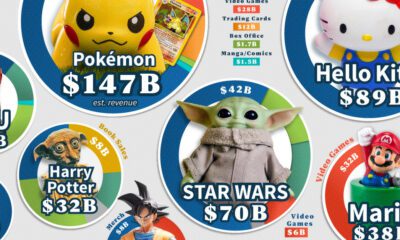
 Culture1 week ago
Culture1 week agoThe World’s Top Media Franchises by All-Time Revenue
-
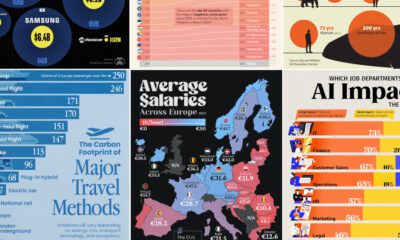
 voronoi1 week ago
voronoi1 week agoBest Visualizations of April on the Voronoi App









